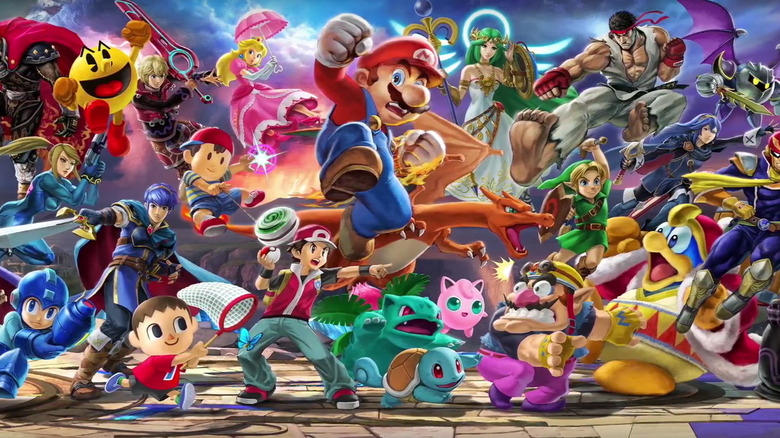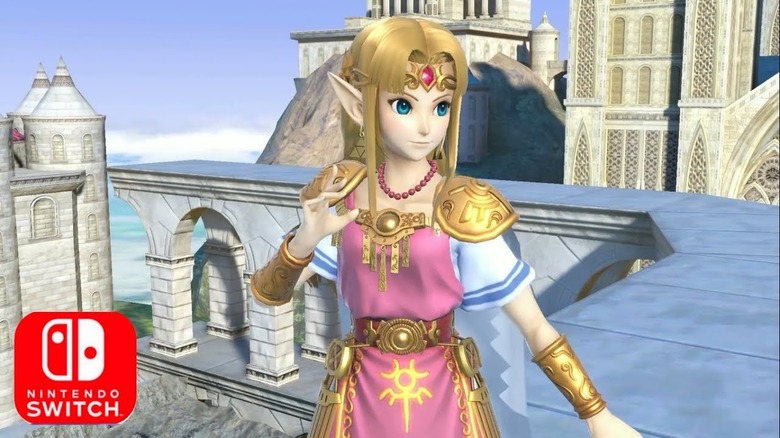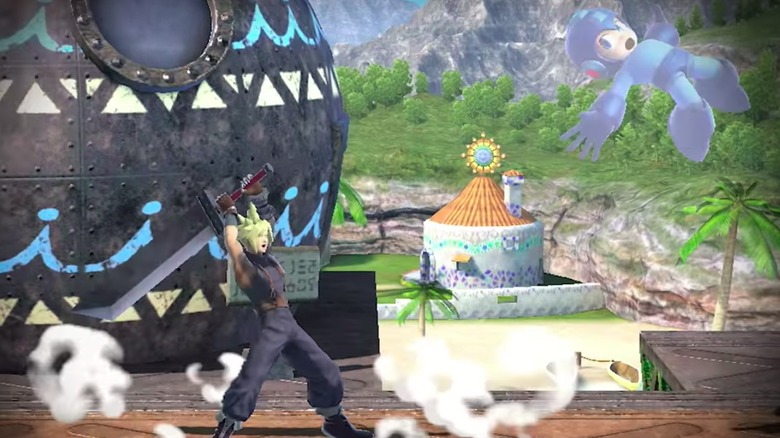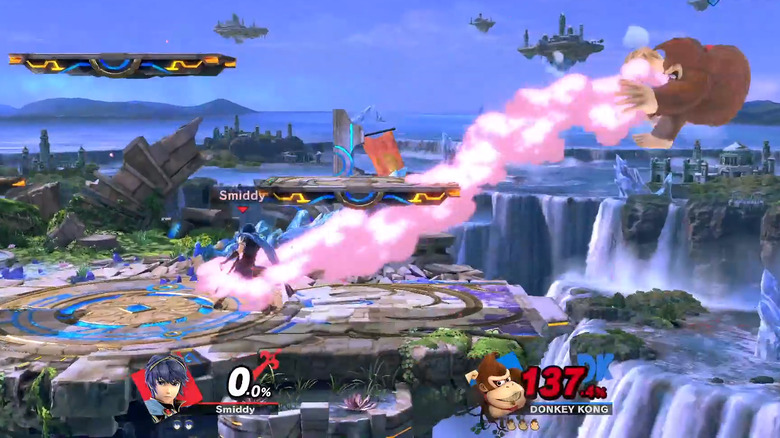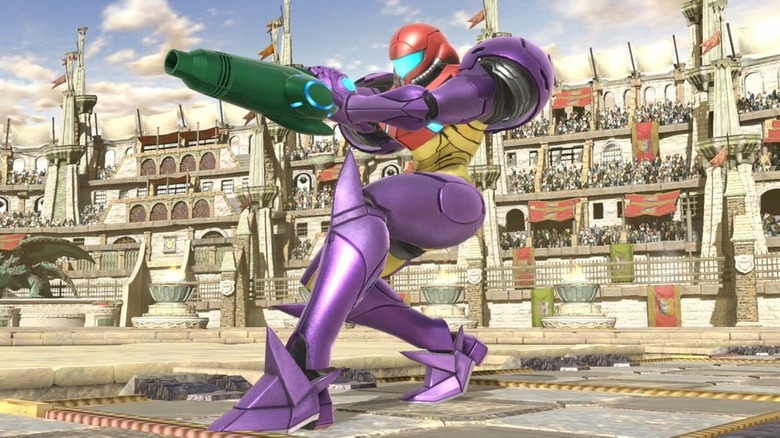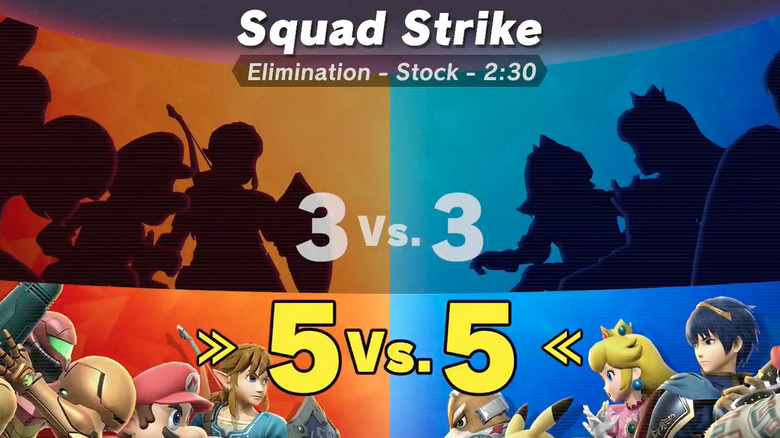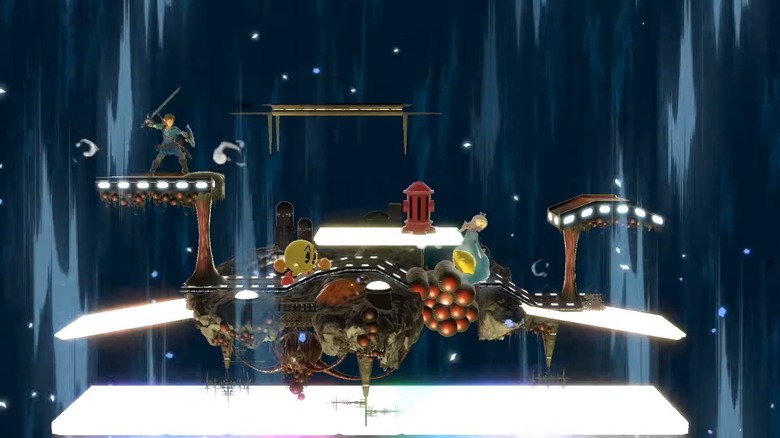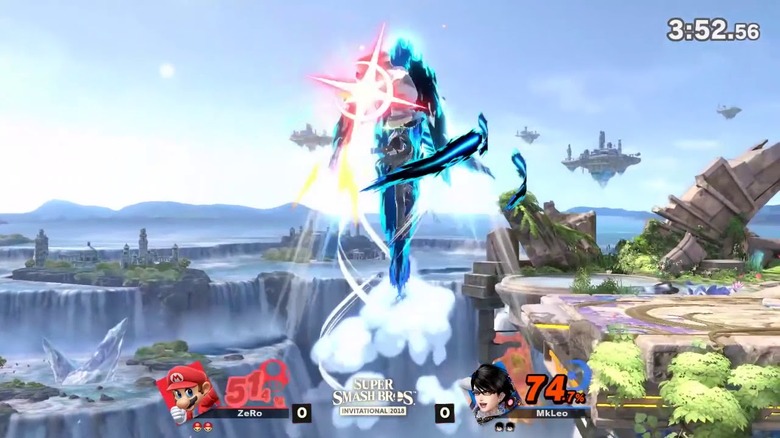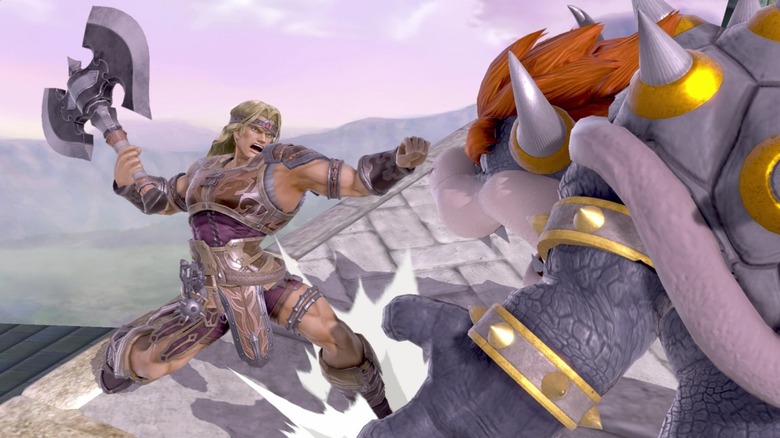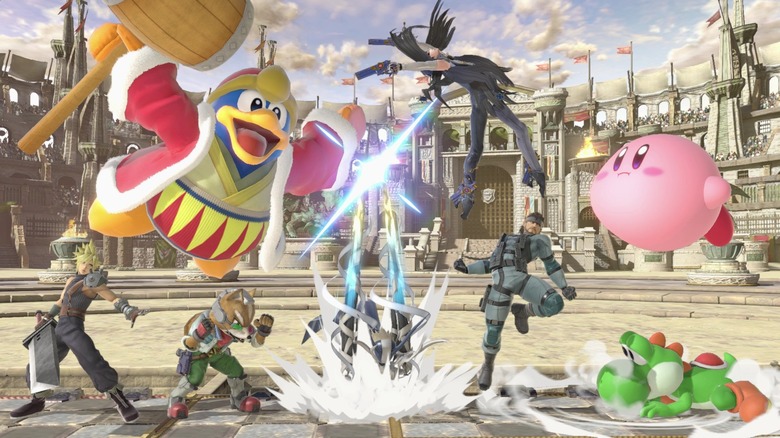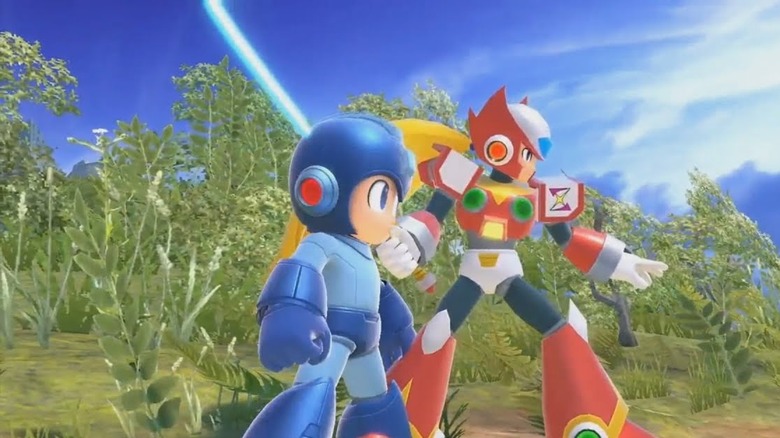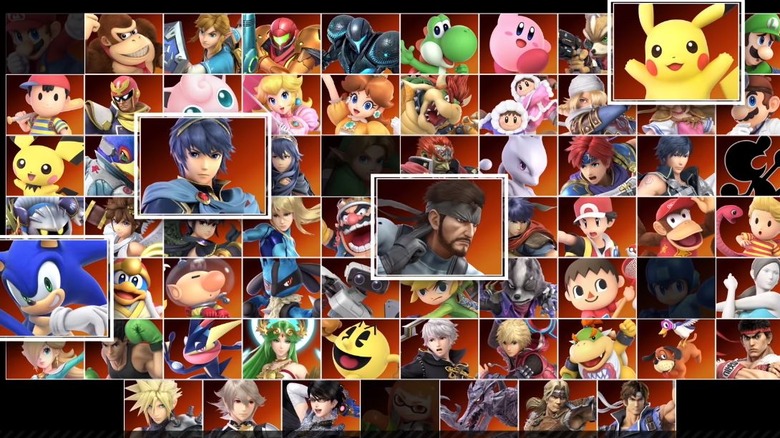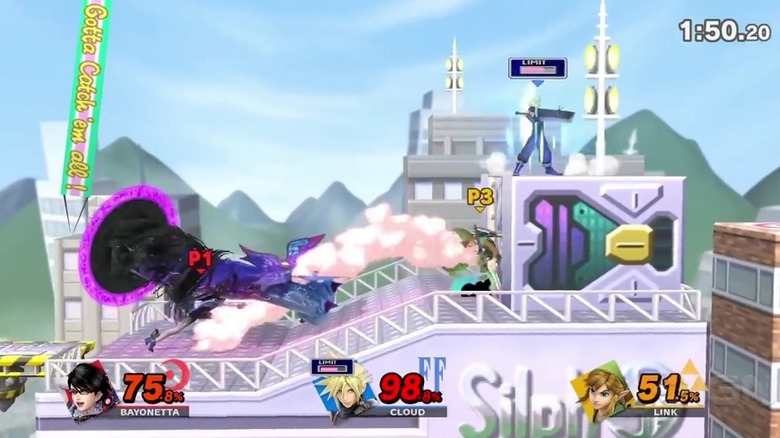What You Didn't Know Was In Smash Bros. Ultimate
Super Smash Bros. Ultimate is the culmination of nearly two decades' worth of fighting game evolution, honed to what fans hope is the closest they'll get to perfection. The game's roster is stacked, featuring an unheard-of amount of fighters at launch with even more coming over the course of the next year. There are more stages, assist trophies, moves, items, and game modes than any game in the Super Smash Bros. series that has come before, and that's before considering all new systems like Spirits on top of it all.
With an almost overwhelming amount of sheer content, the new Smash Bros. is filled to the brim with not-so-hidden gems that gamers might have missed. With that in mind, we've compiled a list of just some of the awesome things you might not have known you could do in Super Smash Bros. Ultimate.
Move faster with Zelda
Zelda is a character who fans simply love getting a chance to play as. For whatever reason, Nintendo has been slow to acquiesce to the growing contingent of The Legend of Zelda fans who want to see the Princess of Hyrule star in her own game. Although mods have made playing as Zelda possible in Breath of the Wild, the Super Smash Bros. franchise has been letting gamers do it for far longer.
The catch? Zelda is really rather slow. Despite being a strong character in some ways, she's been consistently on the bottom tier of competition since Melee, checking in at a horrific 53rd out of 55 on the most recent Smash Bros. tier list.
That's set to change in Super Smash Bros. Ultimate, as Zelda, alongside everyone else, will be receiving a speed buff. Zelda has always been exploitable because of her speed, and even if everyone else is speeding up, her contextual buff could mean some big things. At the very least, Zelda might be more playable, which will probably be enough for fans of the character after a dismal series of iterations in the franchise.
Directional air-dodging
Super Smash Bros. Ultimate looks like it might be the deepest version of the game fans have ever gotten, which is big news for a community that has longed for a more stable competitive scene since the glory days of Melee. What a lot of people might not immediately notice about Super Smash Bros. is that it's a very technical series despite featuring a lot of goofy fighting matchups. Sure, Bowser versus Pikachu is a ridiculous proposition, but both players can win if they play tight enough.
Super Smash Bros. Ultimate will bring back directional air-dodging, which will only serve to make the game even more technically complex. Directional air-dodging essentially serves two purposes: one, it will let players land more safely, more often, which will hopefully make for some higher tension matches; and two, it will reduce the number of feel bad moments newer players experience when they are close to the edge of the stage and falling in the air.
It might not seem like a lot, but knowing you can use directional air-dodges is a huge boon to any player. It's also one of the mechanics that many people loved in Super Smash Bros. Melee, so its triumphant return in what is supposed to be the best game the franchise has ever produced couldn't be better timed.
Deal more damage in 1v1
Ever end up in a party situation where someone inexplicably thinks it's a good idea to do a bunch of 1v1 Super Smash Bros. matches where players rotate in and out with the rest watching? It's a fun idea in theory until you realize that those 1v1 matches can take forever, especially when they're contested between less experienced fighters.
What people might not know is that Super Smash Bros. Ultimate is looking out for everyone. The game will be decreasing the amount of damage players do commensurate to the amount of players involved in the match, meaning damage scales upward the fewer people are involved. That means 1v1 matches will see characters dealing more damage than they have previously, which should speed the game up significantly.
That's going to make Super Smash Bros. Ultimate a lot more watchable. With streams being as lucrative as they are currently, that's probably not an accident, but rather a bit of deft design decision from Nintendo coming to the fore. The best way to use this information? Get a few cheap wins against friends unaware of the change by using heavy-hitters like Donkey Kong or Bowser.
Charge Samus' hand-cannon in the air
One of the earliest disappointments in many Smash Bros. players' careers is the discovery that you can't charge Samus' hand-cannon beam while she's falling through the air. While it isn't something that people have necessarily been clamoring for, the addition of that functionality would definitely make for a lot more flashy moments in future Super Smash Bros. Ultimate video clips.
That's probably why Nintendo chose to quietly add that ability, then. Everything we've seen suggests that the newest Super Smash Bros. is aiming to be as visually pleasing as possible, with as many big, clippable plays available to skilled players as it can cram in. That's going to include the ability to charge Samus' hand-cannon while she's in the air, although she will be vulnerable while doing so.
Although it isn't the most well-known change Ultimate is making, it could be a big one. It's not just Samus, either: other charged attacks will be available as characters are falling in mid-air or jumping, now, and it's a dynamic that fans will need to start watching out for in matches they would never have had to sweat otherwise. Overall, it's another change that is exciting, if not the most competitive, since charging attacks in the fast-paced pro scene is just asking to lose a stock on the spot.
Squad Strike Battles
Squad Strike battles have the potential to change competitive Super Smash Bros. Ultimate as we know it, which is why it's weird that it hasn't been marketed as a bigger selling point by Nintendo. Squad Strike will see players choose teams of 3, 4, or 5 characters and then battle against an opponent with the same amount, with characters getting eliminated after they have fallen in battle.
Anything that adds strategic depth to a fighting game is a welcome addition, and Squad Strike certainly promises to do that. The roster in Ultimate is massive, so even just imagining the character combinations the mode could offer requires a fair bit of mental gymnastics.
The combinations and strategies for this mode seem pretty endless, and it's a huge change for a game that has mostly made its name on the competitive circuit with 1v1 matches. It will be interesting to see if players favor the new mode or if the classic duels are still too tantalizing to ignore, but either way Squad Strike will be a fixture of casual Super Smash Bros. Ultimate gaming sessions.
Have multi-stage battles in one go
One of the biggest points of contention for any Super Smash Bros. players is which maps the battles will be played out on. While Hyrule Temple and the sub-section affectionately referred to as Hyrule Fight Club are a casual staple, the maps are so varied and different in their design philosophy that many players have love-hate relationships with them.
Now, players won't have to settle on just one map per stock battle. A new mode called Stage Morph is debuting in Super Smash Bros. Ultimate that's going to allow players to select multiple stages prior to a fight. Then, during the fight, the stages will begin to shimmer and then morph into different choices, switching up the environment on the fly and ensuring no one will have a homefield advantage for too long.
It's yet another decision from Nintendo that shows the developer has learned a lot over the years. It's unlikely Stage Morph will be for everyone, but that's not the point; it's just more flexibility in a game that is overloaded with choice. It's also something that fans will appreciate the longer the game goes on post-launch as a bit of variation on the usual modes we've come to expect from the series.
Collect trophies from defeated online opponents
A game like Super Smash Bros. Ultimate thrives on its multiplayer, and its online matchmaking means players won't have to get a group of friends together to enjoy the game. That also means trash-talking. Nintendo's adding fuel to that fire in a family-friendly manner, as players will be able to create their own Smash Tags that are personalized with their online ID and some aesthetic choices. Then, when they beat an opponent, they'll be able to claim their Smash Tag and add it to an in-game collection that tracks each one claimed.
That's a pretty nice way to commemorate online victory and could make for some impressive bragging rights as players accumulate more and more Smash Tags. Either way, it's a small addition that Nintendo snuck into the final Smash Direct that will be a lot of fun moving forward.
Perfect shield
A perfect shield, previously known as a powershield until Super Smash Bros. Brawl, is a technique that sees a player activate their full shield so that it connects with an incoming attack on its first few frames. If it's done correctly, the character takes no shield damage and then has a chance to counterattack while their attacker remains stuck in hit-lag.
Perfect shields changed in a subtle way in Super Smash Bros. Ultimate, however. Players now only achieve perfect shields by releasing their shield button at the right moment, instead of activating.
Both players experience hit-lag after the execution of a perfect shield. While the player who executed the perfect shield will recover first, it's still another change that makes the technique even more difficult to execute than it already was.
Tournament mode
One of the most baffling things about modern fighting games is that so many of them fail to include what should be a pretty obvious choice: a tournament mode. Super Smash Bros. has, in the past, fallen under this umbrella as well, despite being a prime candidate for one.
Fortunately, Super Smash Bros. Ultimate features a tournament mode for the first time ever. There aren't a ton of details yet, but Tourney will support tournaments as large as 32 players.
Few things are as appealing as sitting down with a few hours to kill and jumping into a competition with 31 other Smash fanatics. Just keep tournaments with friends in mind when you're ready for a change of pace from your marathon 1v1 sessions.
Knock out assist trophies
There are few things as frustrating in a casual game as a tight fight being decided by an assist trophy at the last minute. Assist trophies are a lot of fun, and introduce even more characters to a game already teeming with them, so many fans who play low-stakes Super Smash Bros. leave them in their gameplay setups.
While some assist trophies have been able to have their moves manipulated via player interaction, very few of them historically have been able to be knocked out. That's different in Super Smash Bros. Ultimate, where gamers are finally able to take a swing at iconic assist trophies like Skull Kid.
Interestingly enough, assist trophies won't just be KO targets: players will actually get a point for KOing them in-game for a nice little bit of stat padding. The fact that most of them can be KOed is already a nice bit of hidden information that makes for some even more interesting games of Ultimate.
Smashdown mode
Everyone has their favorite character to play. Some of us have several, alternating between them to mix up gameplay and skill sets to create a more frenetic shift in dynamics as matches progress. How many of us are comfortable playing the entire roster, though?
In Smashdown mode, players will each select a character and go about their business as normal for the first match. Once a character loses, however, they'll be eliminated from the roster selection page for the rest of Smashdown. The goal is clearly to get players to expand the range of characters they play, and it also creates a sense of urgency in marathon sessions: who is your sixth-best character? Your tenth-? Do you lead with your main, or with a character you've been practicing to try and snipe a few of your opponent's best characters?
Keep track of character's special abilities
One of the harder elements of Super Smash Bros. games in the past has been mastering how a character's special attacks work. In prior iterations, there were only minute visual cues that allowed players to know Cloud's limit gauge was where it was supposed to be, or that Robin still had magic left to cast spells. That's obviously fine at higher levels, where players know their characters inside and out, but it was very daunting for newer players looking to pick up a roster member like Cloud.
Super Smash Bros. Ultimate makes things a lot simpler for players. Robin's magic, Cloud's limit break, and other characters who have similar attack styles will all have on-screen visual indicators. That removes the guesswork from equation, with the added benefit of giving commentators in tournaments a better idea of where a duel is currently positioned.
It's a small change, and it was glossed over when Nintendo announced it, but it's one that once again improves the quality of life of players in-game. That's a recurring theme in Super Smash Bros. Ultimate, and it all combines to make for the most comprehensive, accessible Smash Bros. title ever.

